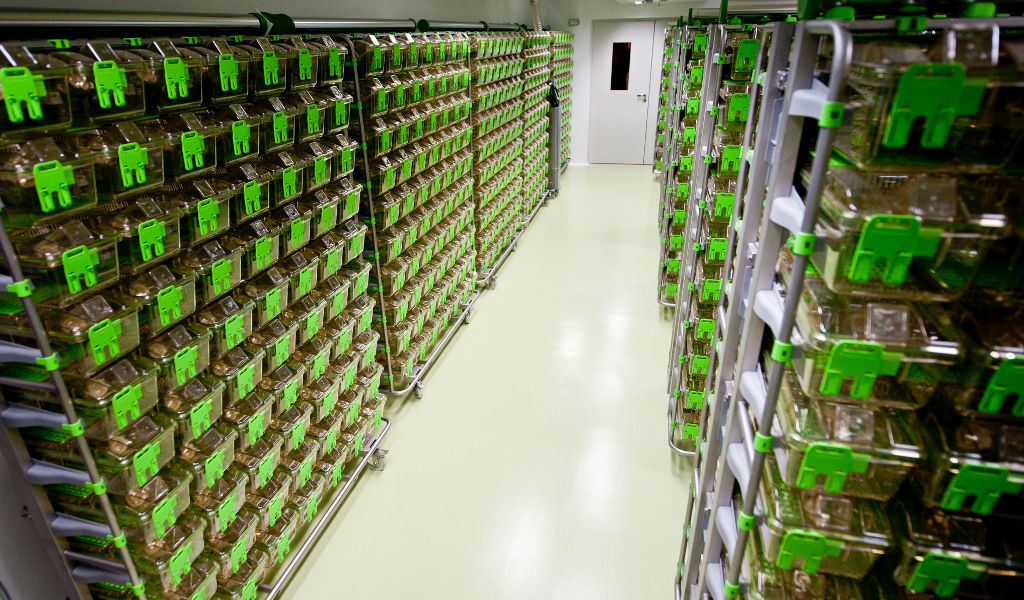CeMBE relies on a qualified team and excellent structure

International standards in the area of rats and mice; filtered air, controlled lighting and temperature
PUCRS hosted the 14th Congress of the Brazilian Society of Laboratory Animal Sciences (SBCAL) and the 3rd Latin American Conference on the topic. The university, which is a reference in the area, relies on the Center of Experimental Biological Models (CeMBE), with an excellent structure and qualified personnel, which includes biologists, veterinarians and undergraduate students. Four of the coordinators are PhDs and two of them are specialists. “We did not make any changes to the existing structures in order to be in accordance with new standards. We started from scratch and are in accordance with the law. The institution set its goals with the experiment, we designed a project and made investments with an eye to animal dignity and welfare”, says the Center’s director, Emilio Jeckel Neto, Professor of the School of Biosciences.
CeMBE is the only department at the university that is able to get animals for research, make use of them and provide care for them. At the moment, 156 projects are being carried out involving experimental models. By means of a computer system, the Center will only recognize them once they earn approval from the Ethics Commission in Animal Use (Ceua). In addition to a space for raising and maintaining rats, mice, bees, fruit flies, zebrafish and crustaceans, there are rooms for researchers and grantees to carry out the essential procedures for their projects, during the day or at night. The only requirement is to book your slot. Every area is access-controlled. The CeMBE team is in charge of providing care to animals. Depending on the nature of the research, it will meet the project’s protocol, for instance, on issues related to dieting, water consumption and inclusion of elements to enrich the environment.
The director of the Institute of Biomedical Research, Paulo Pitrez, adds that these investments will grant PUCRS the recognition as a cutting-edge university in Latin America. “The management and precaution taken in the processes represent an evolution in terms of biomedical research.” He believes a higher level of trust will be given to the university when working on projects with other industries. At Centro Infant, Pitrez deals with experimental asthma models working on new treatments. One of the studies looks at the relationship between the parasitic infections and the disease. “Children, especially the most disadvantaged ones, who are exposed to worms, seem to be more protected from asthma and diabetes.” The idea is to find molecules from parasites that are effective against the respiratory disease”.
Emílio Jeckel Neto was working on his PhD in Japan in 1991 when he received a fax from then PUCRS president Norberto Rauch requesting him to find more information about vivariums. His Japanese advisor, Tsuneko Sato, designed a course especially for him as she admired the president’s vision of future by laying the foundations of biomedical research at PUCRS. After visiting some institutions and attending congresses, Jeckel put together a sketch. By virtue of his experience in the East, he noticed how respectful their culture is to animals. He made use of a hundred mice in his project, which served as models for other ten projects with several researchers from the same university. All of that came from a very well-conceived plan. Every year, Aichi Medical University promotes a Buddhist memorial service honoring the animals used in research. Back to Japan, Jeckel put together the team for what CeMBE would come to be, which helped him define how it would operate.
To find out more about it, please visit PUCRS Magazine 2016 annual issue